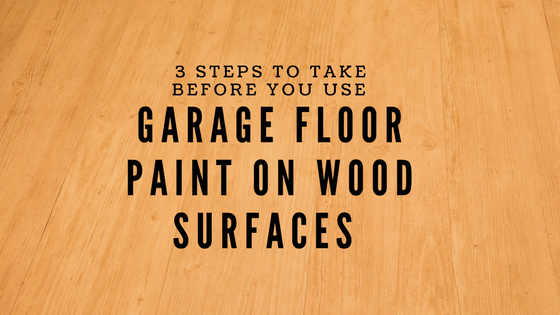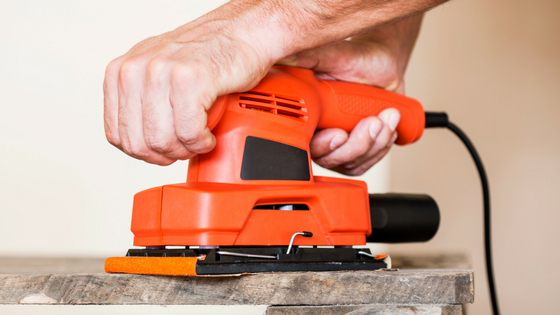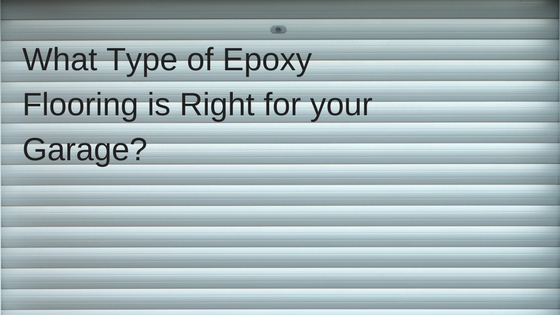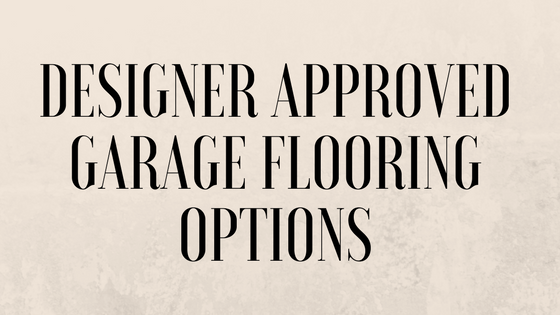
Conventional wisdom says that you shouldn’t use garage floor paint on wood surfaces. Unfortunately, epoxy has a difficult time adhering to wood.
If you have a gallon or two of epoxy garage paint sitting around your house, though, you might not care that wood doesn’t provide the optimal surface for your leftover paint. What’s the point of spending money on new paint when you already have some stored in your garage cabinets?
Before you try to paint your wood with a garage flooring epoxy, you should undertake the following three steps to improve your chances of success. You may not get perfect results, but you’ll save money. Plus, you’ll find a new way to avoid wasting space in your garage.
Pressure Wash the Wood
Before you even think about painting your wood, you need to pressure wash the surface to remove dirt, mildew and other materials. It may seem like a menial task, but it will help you to avoid discovering unsightly marks at the end of your project.
Take the time to powerwash your wood now. It could save you from a big headache later.
Sand the Wood’s Surface to Remove Varnish or Sealer
Depending on where your wood comes from, it may have a coating of varnish or sealer that protects it from scratches and weathering. If you’re painting wood flooring, you’ll almost certainly need to remove the varnish or sealer before you proceed. The same qualities that make coatings good at protecting wood will also prevent epoxy from sticking to the surface.

Sanding the wood will strip away coatings that might interfere with your garage floor paint. If you’re going to use garage floor paint on wood, you cannot skip this part of the process.
Add Primer to Prepare Your Wood
Epoxy paint and wood don’t get along. You can blame that on wood’s flexibility. When epoxy paint dries, it creates a hard, inflexible surface that protects concrete garage flooring from damage. Wood is much more flexible than concrete and often tries to shift under the dry epoxy.
In some cases, the wood won’t even let garage floor paint dry evenly, which could cause the paint to peel sooner than you'd expect.
When you have custom cabinets installed in your garage, it makes sense to add a protective layer of epoxy to the floor. When you’re painting wood, though, you have to take an extra step.
Priming will help your garage floor paint adhere to your wood’s surface. Primer typically comes in light or dark colors, so you need to choose a primer color that won’t interfere with your garage floor paint. In other words, if you have white epoxy, you should choose primer with a light color. If you have black epoxy, you should choose primer with a dark color.
Make sure you apply several coats of primer to the wood. Let each coat dry before you add the next one. Yes, this will make your project take longer. However, spending a little more time waiting for the primer to dry will give you more attractive results.
Assuming that you follow these three steps, you can make your wood more attractive with paint intended for garage flooring. Understand, though, that you can’t expect the epoxy to look like paint intended for wood. Don’t expect perfect results.
If you have questions about using garage floor paint on wood surfaces or remodeling your garage, contact Boston Garage for a free quote. The professionals at Boston Garage have enough experience to answer all of your questions.



